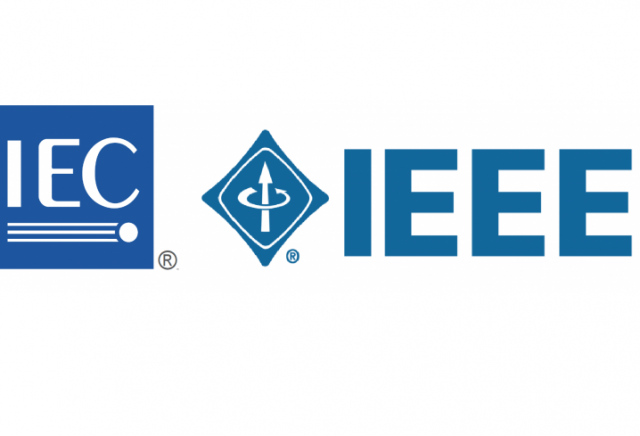Ground faults are one of the most common and potentially damaging disturbances in electrical power systems. They occur when a phase conductor unintentionally comes into contact with the ground or any grounded surface. Accurate and timely detection of ground faults is crucial to ensuring personnel safety, equipment protection, and system stability. This article outlines the key methods used in detecting ground faults across different voltage levels and system configurations, highlighting their advantages, disadvantages, and compliance with relevant international standards such as IEC and IEEE.
1. Residual Current Detection (Zero-Sequence Current)
Principle: Measures the sum of the three-phase currents. A non-zero sum indicates a ground fault.
- Advantages: Simple, cost-effective, suitable for LV, MV, and HV systems.
- Disadvantages: Cannot identify fault direction; sensitive to load unbalance.
- Standards: IEC 60255, IEEE C37.2
2. Directional Zero-Sequence Overcurrent (67N / 67G)
Principle: Detects ground fault direction using zero-sequence current and voltage phase angle.
- Advantages: Differentiates between internal and external faults; essential for meshed or looped systems.
- Disadvantages: Requires accurate polarizing voltage; may misoperate during CT saturation.
- Standards: IEEE C37.112, IEC 60255-151
3. Directional Negative-Sequence Overcurrent (67Q)
Principle: Uses negative-sequence quantities to detect unbalanced ground faults and their direction.
- Advantages: Effective for ungrounded or high-resistance grounded systems; immune to load imbalance.
- Disadvantages: Less effective for balanced faults; requires precise VT and CT inputs.
- Standards: IEC 60255-151, IEEE C37.112
4. Neutral Grounding Resistor (NGR) Monitoring
Principle: Measures current through a resistor grounded at the neutral point to detect fault magnitude.
- Advantages: Limits ground fault current; supports continuous operation in high-resistance grounding (HRG) systems.
- Disadvantages: Limited to grounded systems; doesn't pinpoint fault location.
- Standards: IEEE Std 32
5. Voltage-Based Detection (Neutral Voltage Shift)
Principle: Monitors voltage shifts between phases and ground or the displacement of the system neutral.
- Advantages: Effective in ungrounded and isolated systems.
- Disadvantages: Slower response; may be less accurate in capacitive or complex networks.
- Standards: IEC 60044-2
6. Insulation Monitoring Devices (IMDs)
Principle: Continuously monitors insulation resistance between live conductors and earth.
- Advantages: Provides early warning of insulation degradation; critical in IT systems.
- Disadvantages: Not applicable to solidly grounded systems.
- Standards: IEC 61557-8, IEC 60364-7-710
7. Core Balance Current Transformer (CBCT)
Principle: Detects imbalance in phase currents due to leakage to earth using a zero-sequence CT.
- Advantages: High sensitivity; widely used in sensitive earth fault (SEF) protection.
- Disadvantages: Requires individual installation; cannot handle multiple circuits.
- Standards: IEC 60044-1, IEC 60947-2
8. Signal Injection / Pulsing Techniques
Principle: Injects a known signal into the system and detects changes in its return path to locate faults.
- Advantages: Accurate fault location, even for high-resistance faults.
- Disadvantages: Requires special instruments; usually used in maintenance scenarios.
- Standards: IEC 61557-9
9. Harmonic and Transient-Based Detection
Principle: Analyzes high-frequency components or waveform distortions during fault events.
- Advantages: Effective for detecting arcing and intermittent faults.
- Disadvantages: Requires advanced digital relays and high-speed processing.
- Standards: IEEE 242 (Buff Book), IEC 60255 series
10. Quadrilateral Ground Distance Protection (21G - Quad)
Principle: Uses impedance measurement to determine fault location within a quadrilateral R-X characteristic.
- Advantages: Effective for long lines and high-resistance faults; flexible settings.
- Disadvantages: More complex settings; potential overreach under arc resistance.
- Standards: IEC 60255-121, IEEE C37.113
11. Mho Ground Distance Protection (21G - Mho)
Principle: Detects ground faults by measuring impedance with a circular operating characteristic.
- Advantages: Inherently directional; stable for close-in faults.
- Disadvantages: Less sensitive to resistive faults; potential underreach on long lines.
- Standards: IEEE C37.113, IEC 60255-121
12. Summary Table
| Method | Type | Best Use | Advantage | Standard Compliance |
|---|---|---|---|---|
| Residual Current (50N/51N) | Non-directional | General LV/MV | Simple, widely used | IEC 60255, IEEE C37.2 |
| Directional Zero-Sequence (67N) | Directional | MV/HV networks | Detects direction | IEEE C37.112, IEC 60255-151 |
| Directional Negative-Sequence | Directional | HRG, ungrounded systems | Immune to unbalance | IEC 60255-151 |
| CBCT | Non-directional | SEF applications | Very sensitive | IEC 60044-1, IEC 60947-2 |
| NGR Monitoring | Non-directional | HRG systems | Limits damage | IEEE Std 32 |
| Neutral Voltage Shift | Non-directional | Isolated/IT networks | Detects faults without current flow | IEC 60044-2 |
| IMD | Continuous monitoring | IT systems (hospitals, marine) | Preventive detection | IEC 61557-8 |
| Signal Injection | Diagnostic | Fault location | Pinpoint accuracy | IEC 61557-9 |
| Harmonic/Transient Detection | Advanced | Intermittent/arcing faults | High fault sensitivity | IEEE 242, IEC 60255 series |
| Quad Distance Protection (21G) | Distance-based | Long transmission lines | Detects arc & resistive faults | IEEE C37.113, IEC 60255-121 |
| Mho Distance Protection (21G) | Distance-based | HV transmission with long lines | Stable and directional | IEEE C37.113, IEC 60255-121 |
13. Final Thoughts
The choice of ground fault detection method depends on system configuration, grounding type, fault sensitivity requirements, and available protection equipment. For instance:
- Solidly grounded LV/MV systems: Residual current or CBCT.
- Resistance-grounded MV systems: NGR monitoring, directional protection.
- IT systems (e.g., hospitals, ships): IMDs.
- HV transmission networks: Directional and distance-based protection (Quadrilateral or Mho).
Modern digital relays and protection IEDs (Intelligent Electronic Devices) support multiple methods, offering flexibility and increased reliability.
